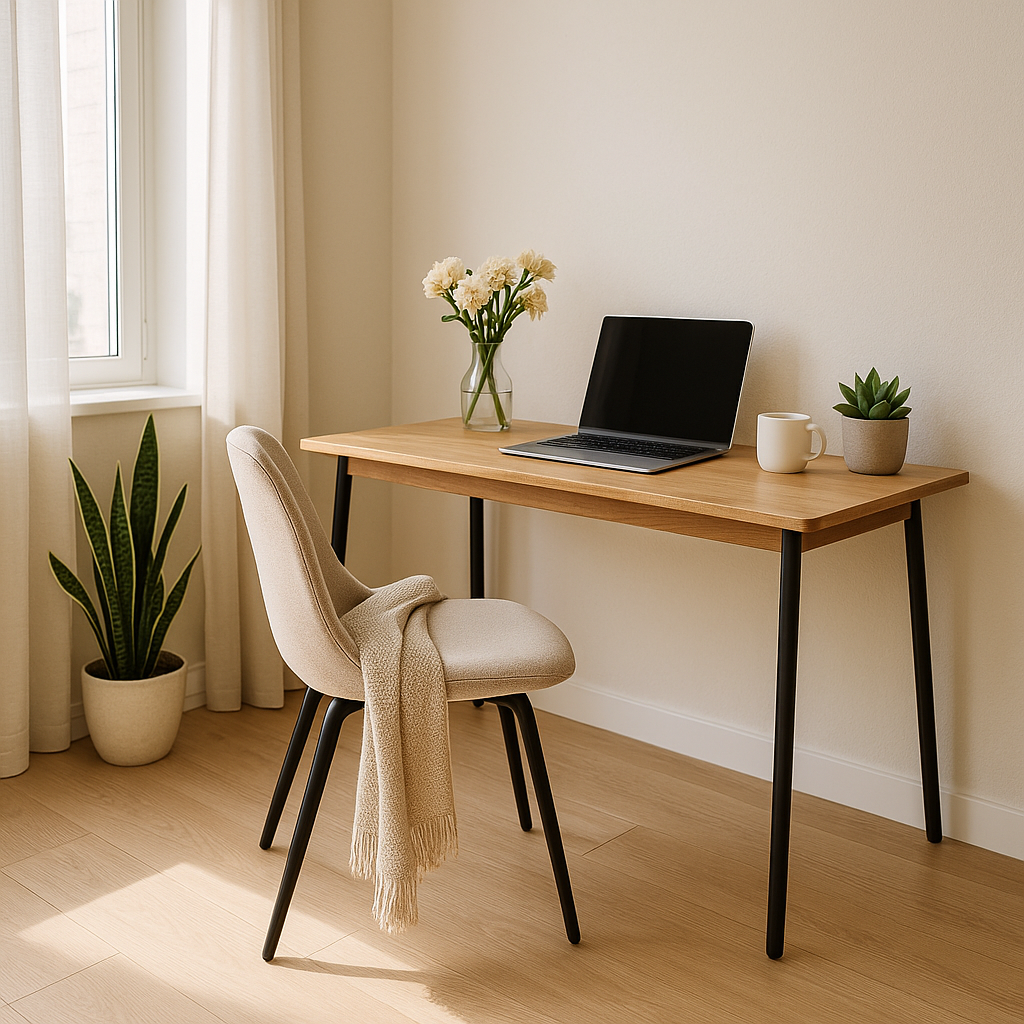Choosing the right office chair is one of the most important decisions when setting up a home workspace—especially in a small apartment. It needs to be comfortable, compact, and stylish enough to blend into your existing decor. A bad chair can lead to discomfort, poor posture, and reduced productivity, while the right one can completely transform your work-from-home experience.
In this guide, we’ll walk you through the best tips for selecting the perfect chair for your small office, whether you’re working full-time, part-time, or just need a seat for occasional tasks.
1. Understand Your Work Habits
Before shopping, consider:
- How many hours per day do you sit?
- Do you work at a desk or a table?
- Do you move your chair between rooms?
- Is your space shared or multifunctional?
Understanding your routine will help determine whether you need full ergonomic support, a light and movable option, or something discreet that doubles as dining furniture.
2. Measure Your Available Space
In a small home, every centimeter counts.
What to measure:
- Desk height
- Available floor space around your desk
- Chair clearance when pushed in
- Distance from walls or furniture behind the chair
If your workspace is in a bedroom, hallway, or living room corner, you may want a chair that tucks away completely or one without wheels.
3. Prioritize Ergonomics
Good posture = better comfort and focus. Even in a small space, ergonomics matter.
Look for:
- Adjustable height (a must!)
- Lumbar support to reduce back strain
- Curved backrest that follows your spine
- Supportive seat cushion (memory foam or high-density foam)
If full-size ergonomic chairs are too bulky, consider mid-back or armless models with good support and a compact footprint.
4. Go Armless (if Necessary)
Armrests are great for comfort—but not always practical in tight spaces.
Benefits of armless chairs:
- Tuck completely under the desk
- Lighter and easier to move
- Often cheaper and smaller
Choose this style if your workspace doubles as a dining area or if you’re working at a narrow desk or wall shelf.
5. Consider Swivel and Mobility Needs
Swivel and wheeled chairs are useful—but not always essential.
Choose a wheeled chair if:
- You need to move between multiple zones (desk, cabinet, printer)
- You work long hours and want mobility
- Your floor is smooth (avoid wheels on thick rugs)
Choose a stationary chair if:
- You’re in a very tight space
- You’re working in a bedroom or living room and want a cleaner look
- You need a dual-purpose chair for dining or guests
Some chairs come with removable casters—offering the best of both worlds.
6. Match the Chair to Your Home’s Style
Just because it’s functional doesn’t mean it has to be ugly.
Popular chair styles that work well in small homes:
- Scandinavian: Light wood, neutral fabric, clean lines
- Mid-century modern: Tapered legs, minimalist form
- Industrial: Metal frame, leather or faux-leather seat
- Boho: Rattan or cane back, earthy tones
- Contemporary minimalist: Sleek, black or white design with matte finishes
A good chair can enhance your decor—not clash with it.
7. Choose the Right Materials
Materials affect both comfort and appearance.
Seat and backrest options:
- Mesh: Breathable, great for hot climates
- Upholstered fabric: Soft and homey
- Faux leather or leather: Easy to clean and sleek
- Wood or plastic: Simple and versatile, but less cushioned
Opt for materials that match your climate, usage time, and home style.
8. Keep It Light and Portable
If you live in a small or flexible space, you may need to move your chair often.
Look for:
- Lightweight frames (metal or wood over heavy plastic)
- Compact legs that glide easily on floors
- Stackable or folding designs for storage
Chairs under 7–9 kg (15–20 lbs) are ideal for small apartments.
9. Don’t Overlook Dining Chairs
Some of the best small-space office chairs are actually dining chairs.
Why they work:
- Stylish and easy to blend into other rooms
- Usually armless and compact
- Affordable and widely available
Add a seat cushion or lumbar pillow to improve comfort for longer work sessions.
10. Bonus: Use Accessories to Upgrade Comfort
If your perfect chair doesn’t meet every ergonomic need, accessorize it:
- Lumbar support pillow
- Seat pad or cushion
- Footrest for posture
- Chair mat to protect floors
These additions can turn an ordinary chair into a surprisingly ergonomic solution.
Recommended Compact Chair Options
1. IKEA LÅNGFJÄLL
- Sleek design with or without wheels
- Ergonomic curve, compact frame
2. Steelcase Series 1 (armless)
- High-end support in a small footprint
- Great for long workdays
3. Herman Miller Sayl (armless)
- Iconic design, breathable mesh
- Expensive, but ideal for long-term use
4. Article Culla Dining Chair
- Comfortable enough for short work sessions
- Mid-century style with padded seat
Choosing the ideal chair for your small office doesn’t have to mean sacrificing comfort, style, or space. Whether you go for a compact ergonomic model, a stylish armless design, or a multifunctional dining chair, what matters most is how well it supports your posture, suits your space, and fits your lifestyle.
Invest in a chair that makes you feel good during and after your workday—and your body (and productivity) will thank you.

